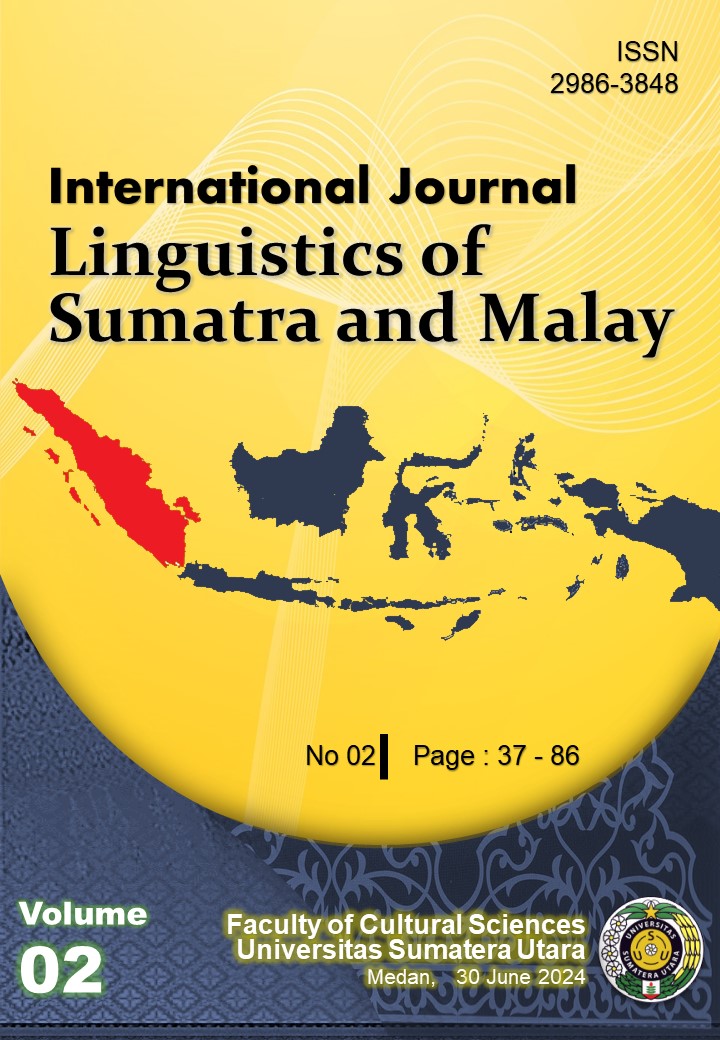Analyzing Lexical Density and Readability in IELTS Band 4 Students’ Writing Test
DOI:
https://doi.org/10.32734/ijlsm.v2i2.17886Keywords:
Lexical density, Readability, IELTS, Writing TestAbstract
This study explores the lexical density and readability levels of writing produced by IELTS Band 4 students. The main objectives are to assess the lexical density and readability of their writing across ten writing tests. The study employs a descriptive qualitative research method, using data collected from 10 writing tests conducted by IELTS Band 4 students. Lexical density is determined using the "Analyze My Writing" website, while readability is assessed using the Flesch Reading Ease formula and scale. The findings reveal a wide range of lexical density, ranging from 46.98% to 63.93%, indicating varying levels of content richness and complexity in the students' writing. Similarly, readability scores vary significantly, with scores ranging from 34.21 to 66.32, reflecting differences in text difficulty and ease of comprehension. These findings underscore the diverse linguistic proficiency and accessibility of writing among IELTS Band 4 students.
Downloads
References
Boers, F. (2021). Evaluating second language vocabulary and grammar instruction: A synthesis of the research on teaching words, phrases, and patterns. Routledge.
British Council. (2024). Understanding and explaining IELTS scores. https://takeielts.britishcouncil.org/teach-ielts/test-information/ielts-scores-explained
Brown, H. D., & Abeywickrama, P. (2004). Language assessment. Principles and Classroom Practices. Pearson Education.
Exam, G. B. (2024). CEFR Levels to IELTS: In-Depth Score Comparison. Exam Blog. https://global-exam.com/blog/en/cefr-levels-to-ielts-in-depth-score-comparison/
Halliday, M. A. K., & Matthiessen, C. M. I. M. (2013). Introduction to Functional Grammar. Routledge.
Kyle, K. (2019). Measuring lexical richness. In The Routledge handbook of vocabulary studies. Routledge.
Miskiyah, N. (2021). Analyzing Lexical Density and Readability of Reading Texts in English Textbook Stop Bullying Now by Mahrukh Bashir (Doctoral dissertation). IAIN KUDUS.
Ojha, P. K., Ismail, A., & Srinivasan, K. K. (2021). Perusal of readability with focus on web content understandability. Journal of King Saud University-Computer and Information Sciences, 33(1), 1–10.
Pratiwi, Y., Farikah, F., & Indriani, L. (2018). An analysis of lexical density and readability in reading text on English textbook used by form 4 level of secondary school students in SMKBSB Malaysia. Journal of Research on Applied Linguistics, Language, and Language Teaching, 1(1), 66–75.
Rizkiani, D., Mahdi, S., & Sujatna, E. T. S. (2022). Lexical Density and Readability of the Facil’s ‘Advanced Learning Textbook’for Indonesian High School Students. AL-ISHLAH: Jurnal Pendidikan, 14(1), 741–752.
Shaw, S. D., & Weir, C. J. (2007). Examining writing: Research and practice in assessing second language writing. Cambridge University Press.
Stenner, A. J., & Stone, M. H. (2022). Does the Reader Comprehend the Text Because the Reader Is Able or Because the Text Is Easy? In Explanatory Models, Unit Standards, and Personalized Learning in Educational Measurement: Selected Papers by A. Jackson Stenner. Singapore: Springer Nature Singapore, 133–152.
Weir, C. J. (1993). Understanding and developing language tests. Prentice Hall.
Downloads
Published
Issue
Section
License
Copyright (c) 2024 International Journal Linguistics of Sumatra and Malay

This work is licensed under a Creative Commons Attribution-ShareAlike 4.0 International License.
All articles published in the International Journal Linguistics of Sumatra and Malay (IJLSM) are licensed under the Creative Commons Attribution-ShareAlike 4.0 International License (CC BY-SA 4.0).
This license permits anyone to:
-
Share — copy and redistribute the material in any medium or format.
-
Adapt — remix, transform, and build upon the material for any purpose, even commercially.









